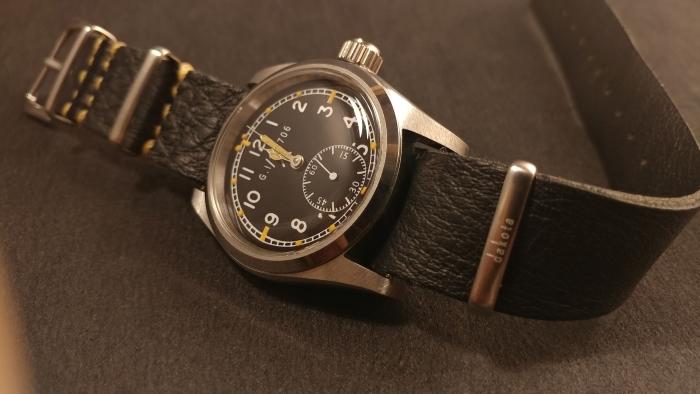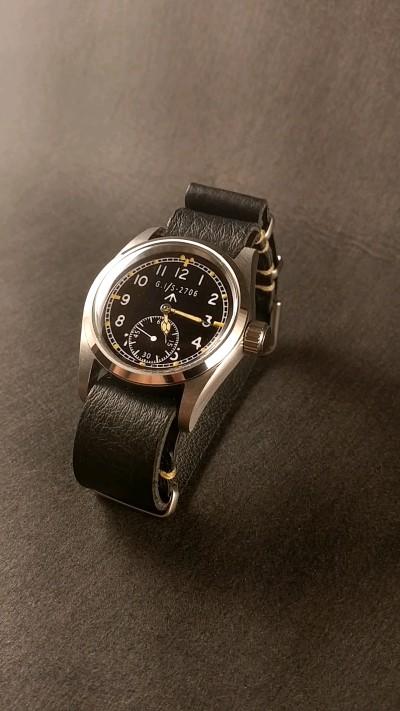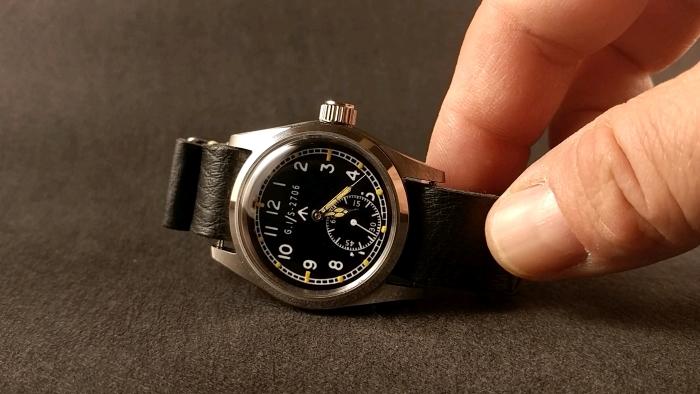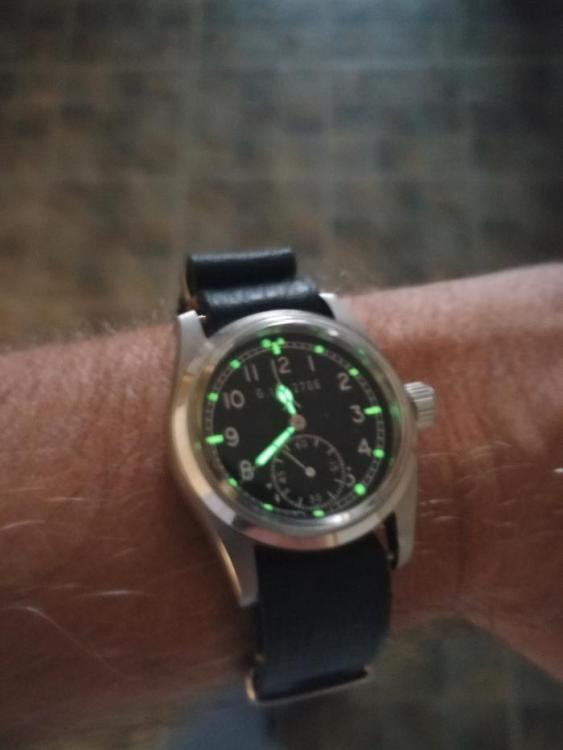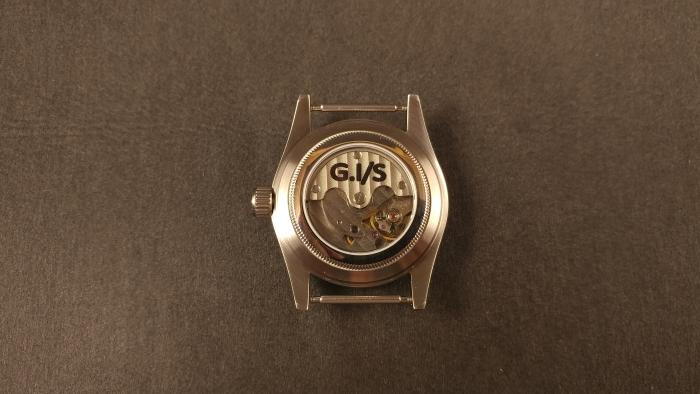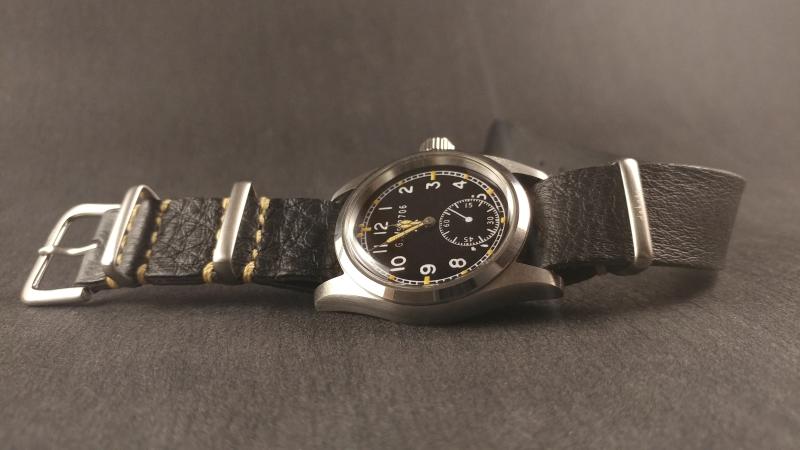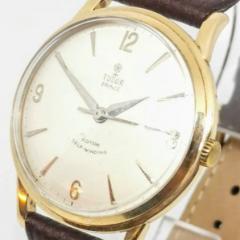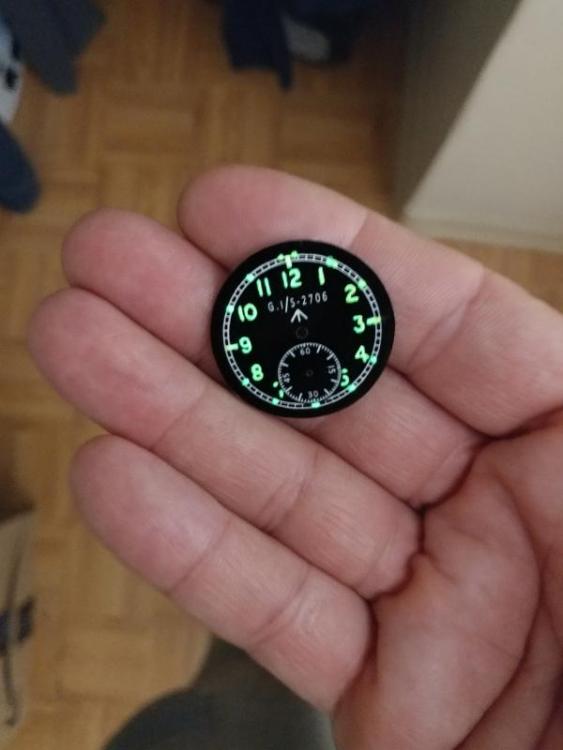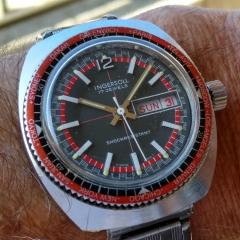Leaderboard
Popular Content
Showing content with the highest reputation on 10/28/19 in all areas
-
Just finished a vintage build with correct working seconds at the six position. Hard to find a good reissue so I made my own with a aftermarket case and a dial made by me from scratch. logo is also my logo. Looks very professional maybe I could get some opinions from you guys. I have 25 more dials with different designs from single sub seconds to 2 and 3 eye chronographs. Its hard to find the cases I want. I guess I will settle with aftermarket cases for now and modify them.3 points
-
Yes. Just friction. Gross adjustments using lever. Fine adjustments using screw. I would get it a lot tighter than 20 seconds before using the screw however. Using the lever to regulate with precision of +/- 5 isnt hard at all. It's when you start going for tighter than that is when the screw comes in handy.2 points
-
1 point
-
1 point
-
Ronda 515? I replaced one not too long ago.I saw one of those in the bag as well. Since nothing appeared to be missing from the movement I didn't worry about it.1 point
-
1 point
-
1 point
-
The idea is they would center the screw and then use the lever to get it within a few seconds of +/- 0 and then sort out the rest of those seconds with the fine adjustment screw. It's really difficult to regulate with precision of down to the second with just the lever so the fine adjustment is there to help with that.1 point
-
Hi well done watchie, patience is a virtue to quote a proverb .1 point
-
1 point
-
Hi I dont know if during your research you picked up the tech sheets for the 1120 so I have included them for you. You seem to be getting plenty of advise so no point me chiming in all the best 1011_Omega1120A (1).pdf 767_Omega 1120 (2).pdf1 point
-
Hello all, I've been a member for a few years but gave up trying after multiple failures and a lack of funds, now I'm back, I'm going to turn my shed into a workshop, I've been completing Mark's level 2 course and I've already started level 3. The theory is a lot easier than the practical for me. Anyway, hopefully I will succeed this time, I know there are a lot of helpful people on here. Cheers, Dave.1 point
-
Yes that's exactly what it's for. It will move the two posts hanging down closer or farther apart. The idea being that you want to get as close to the hairspring as possible without completely restricting it. My concern would be that I don't know what adjustments the previous repair included. I wouldn't want to assume that that was adjusted correctly but the find adjustment was not. It's all symbiotic, if you know what I'm saying. That would be my concern. The reason I'm more familiar with this is because I happen to be working on my own Seamaster with an 1120 movement. I've done a lot of research and homework before beginning this project and am taking it very slow. There's just so much to know!1 point
-
Interesting question and now that you mention it there's a story to tell which could possibly be, or be part of the problem! I always replace the mainspring with a new mainspring if I can find one. In this case however the cousinsuk.com search function did not yield a result for calibre 6380, but I noticed that ranfft.de listed the same mainspring dimensions for calibre 6325 which was available (Generale ressorts GR5171). However, the diameter of the inner coil was too wide to fit the barrel arbor so I had to adjust the inner coil by pressing on it with the wide section of my brass tweezers. However, I only noticed that the inner coil was too wide after I had pressed it into the mainspring barrel, and at that point I couldn't reach the inner coil sufficiently with my tweezers. So, I had to take it out, put it on a mainspring winder (K&D), adjust it (while in the winder barrel) and press it back in to the mainspring barrel. In the process I slightly deformed the inner coil but didn't think much of it. Now that you mention it, I wonder if that could be part of the problem?1 point
-
Hello Ben, would you like to introduce yourself first? It's considered polite here to do so, and I'm sure the more knowledgeable members will be more inclined to help you if you do. There is a special section for it, in the lounge area.1 point
-
Hello NJD1977, and welcome to the forum. Unfortunately your question is a bit more complicated than it may seem. I can show you the underside of the balance cock. I will take some pictures when i get home and post them here, but I do believe there is a gear under there. In addition to that, the 1120 movement utilizes the "etachron" system for regulation. The "stud" that you drew the line over actually has two posts that come straight down where the hairspring will go through. That can be adjusted to limit the space on either side of the hair spring to decrease it's deviation in the different positions and also help to regulate the timing. In addition, you can adjust the beat error by moving another lever, and then on top of that you have the fine adjustment screw. In order to make an adjustment to the "etachron" you'll need a special "etachron" key (they're about $40). All of this will require a timegrapher as you'd be making very small adjustments and then checking the timing. You'll also need to look at the timing in the different positions. I hope this helps. I would still recommend taking the watch back to the repair place as they may be better equipped to handle these adjustments. Like I said...I'll post some pics of everything I'm talking about later tonight when I get home from work.1 point
-
The fine adjust screw will move only so far. The "screw" is an eccentric, so you are correct, once it gets to a certain point it will reverse the adjustment if you keep turning it 360°. Put the screw in the center position (the slot inline with the balance pivot) then CAREFULLY move the lever a fraction of a mm clockwise to make it slower or counter-clockwise to make it run faster. Once you are with 15 seconds +/- then you can use the fine adjustment screw to get it closer. It's going to be rather a long process without a timegrapher, and we are all assuming that the beat error is within spec's.1 point
-
After a bit of research using the adjusting screw of an Omega allows for +/- 15 secs per day which should be ample adjustment.1 point
-
The problem is if somebody rushed the service then you have to wonder what else they did wrong? Then if you want to regulate the watch I would really would recommend getting a timing machine. It's really easy when you start moving the levers to take the watch out of beat and without a timing machine you're not going to notice that unless you go extreme. Even just to regulate the watch a timing machine would really be helpful.1 point
-
Use ronsonol lighter fluid. It is safe to use. It won't harm any parts of the balance. You can leave the balance in the stuff for days. Use a screw top container because it evaporates very quick.1 point
-
Thought it was a temporary hand that came with the new movement to be honest. Don't do too many movement swaps to be honest but I seem to remember something similar from one I did in a Rotary I worked on some time ago. Sent from my moto g(6) play using Tapatalk1 point
-
What about the strength of the mainspring? Sent from my GT-N5110 using Tapatalk1 point
-
1 point
-
In my days back in the 70's & 80's you could buy un-finished watch stems all ready threaded, with a bit of work on the lathe you finished it to fit the cal of the movement. Can you still buy them.1 point
-
1 point
-
Threading blued steel is a no-no. It will kill your die (or screw plate). Period. Someone will say it's possible, they're wrong. Use O1 or similar steel in its annealed state, harden and temper afterwards. Someone will say "it'll warp", they may be right, but you can straighten it. I make at the very least 2 per month among many other turned parts and my dies and screwplates love me. If you need to anneal steel, it needs to be heated to red then cooled as slowly as possible. I do it in iron tubes about 20mm diameter packed with charcoal dust, heat it to full red/orange, next to firebrick, then let it cool.1 point
-
This time, its a "real" watch for Watch of today, sort of. You may have noticed that I have a fascination for the more quirky stuff. Strange types of movements, Communist dictators with bad tobacco habits, sausages, tennis playing beagles.. that sort of thing. Well today's , quirk is plastic. Lots of plastic. Blue acrylic and off white PVC to be precise. This is a Basis "Lucerne" watch. Pprobably, judging by the bizarre design,this is from round about the same time as the first of the Jelly Fish Swatch watches, so around 1983 give or take a few years. It is a One Jewel Wonder, with the dial held in place by the crystal which in turn is held in place by a metal retaining ring. No dial feet here, so the positioning of the dial is a little hit or miss. There is no obvious way in to the watch, and the stem release, while visible through the rear acrylic is not accessible, therefore you have to attack it from the front, so I grabbed a large lump of blue-tak, jammed it on the crystal and pulled, with dramatic effect. The crystal, crystal ring, dial and hands all parted company from the watch, reveling the gummed up mechanism beneath. The crown and stem was extracted by backing off the screw holding the keyless work down, and gently lifting the retaining tab with a sewing needle. This then permitted extraction of the mechanism, which I then tore apart and cleaned. The only remaining issue is that if I want to do any further adjusting or regulating, I need to repeat the above rigmarole, however since the thing has presumably never been looked at from the moment it left the factory, it may well be another thirty years or more before anyone else has to figure this out. Having said that, I will strip it back down again tomorrow assuming it runs for the next 24hrs without any major issues. I have the beat error, and the rate sorted out, but the amplitude is still a little low but I'm hopeful it will pick up a bit as the lubrication gets to work on all of those long neglected pinions1 point
-
According to convension what ever the measurement is add 0.01, I believe that's what is quoted by Esslinger and others. The criteria is that when fitting the crystal it must be pressed in square to avoid a pinched gasket. So great care must be taken on fitting. A screw press is best as it is more controllable. I have done it using the hand press I lubricates the crystal edges a little water, just a wipe, lay the crystal on to the gasket ensure its square and press gently so it eases it in with little or no real force, also choose the correct dies for the job.1 point
-
1 point
-
Doesn't the Vostok amphibia crown unscrew from the stem? I know they have a pretty unusual system to accommodate the screw crown which disconnects the crown once you start to screw it in but apart from that I've never really thought about it. Anilv1 point
-
I have coupled stems using electric dremel as lathe. A sketch of what you have in mind helps.1 point
-
Have a look at cousinsuk website ... Search for stem extensions and you'd find what you need Envoyé de mon moto g(7) power en utilisant Tapatalk1 point
-
The other method with the day wheel is to loosen it with screwdriver by pressing on the star wheel underneath. Realign it. Then gently stake it closed again. I have done this method when even the correct fitting wheel wasn't aligning. Weirdly not much is spoken about this method in the Seiko community despite me having a problem with the wheels on number of ocassionas mechanical and quartz. The date wheel sadly needs to Be replaced or in rare cases repainted if it is NLA or extremely rare (such as omega Moon phase etc. )1 point
-
1 point


